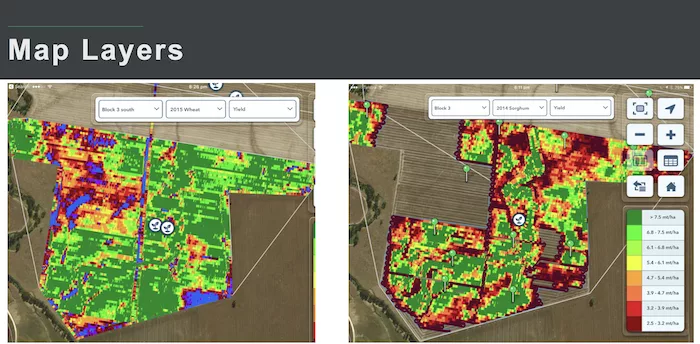Australian farmer David McGavin can relate to U.S. farmers who are dealing with drought conditions in 2023.
“I didn’t even know you had severe droughts over here,” McGavin says. “In Australia, we have some areas that might get only 1-2 inches of rain in a couple years. Sometimes if I’m on the road, and it’s raining back at my place, I’ll call home and say, ‘Send me a picture of the rain,’ just so I can see it.”
McGavin, who co-founded Precision Seeding Solutions dealership in 2011 with his wife, Lauren, grew up on a 1,000-acre farm in New South Wales, a state in southeast Australia. Although drought is a regular occurrence in southern Australia, forward-thinking famers have been making no-till work down under since the 1960s.
One of McGavin’s biggest learning experiences occurred in 2014. The year got off to a solid start with some early moisture, but rain was non-existent for most of the growing season, and the soils quickly dried up.
“You could easily see the crops were struggling,” McGavin says. “Our sorghum went all pineapple-like and wasn’t recovering.”
With no rain in sight, McGavin attempted to salvage a profit by baling the sorghum.
“When you’re in the middle of a drought, fodder is always at a premium, so we did end up making reasonable money off it,” he says.
While the decision paid off in the short-term, it came with some consequences when McGavin planted wheat the following year.
“There was a direct correlation to where we ran the baler and where the yield suffered the following year,” he says. “We lost half our yield on fields that were baled the previous year. The money we made from baling in 2014 was subsequently lost in 2015 by the negative affect it had on our yield.”
To rectify the problem, McGavin started planting different varieties of sorghum using a Precision Planting vSet Select multi-hybrid planting system. He built a multi-hybrid map, using a Veris Technologies soil sensing machine to determine soil types, and identified areas that required different sorghum varieties.
“We’re now using 2 seed hoppers to deliver different varieties instantaneously,” McGavin says. “We think of the 2 sorghum varieties as an irrigated variety and a dryland variety. Our best soils will perform like an irrigated farm, and other areas will perform like a dryland farm. It’s not really about improving the good areas, but rather preventing the drier areas from failing.”
McGavin estimates that his average sorghum yields in drier areas improved by almost 36 bushels per acre after he implemented the multi-hybrid system.
"Farmers in Australia tend to embrace precision technology quickly because we need it in order to survive," he says. "See and spray technology is being used on a lot of farms — anyone who can afford it is going to have it. The bigger operations all have the camera spray system because they need it to reduce input costs."
Related Content
Technology to Help Farmers Deal with Drought
[Video] Precision Planting Unveils New Sprayer Technology
CropLife/Purdue Precision Survey Shows Precision Technology on the Rise




![[Technology Corner] Autonomy & Robotics Take Center Stage](https://www.precisionfarmingdealer.com/ext/resources/2026/01/12/Autonomy--Robotics-Take-Center-Stage.webp?height=290&t=1768253759&width=400)


